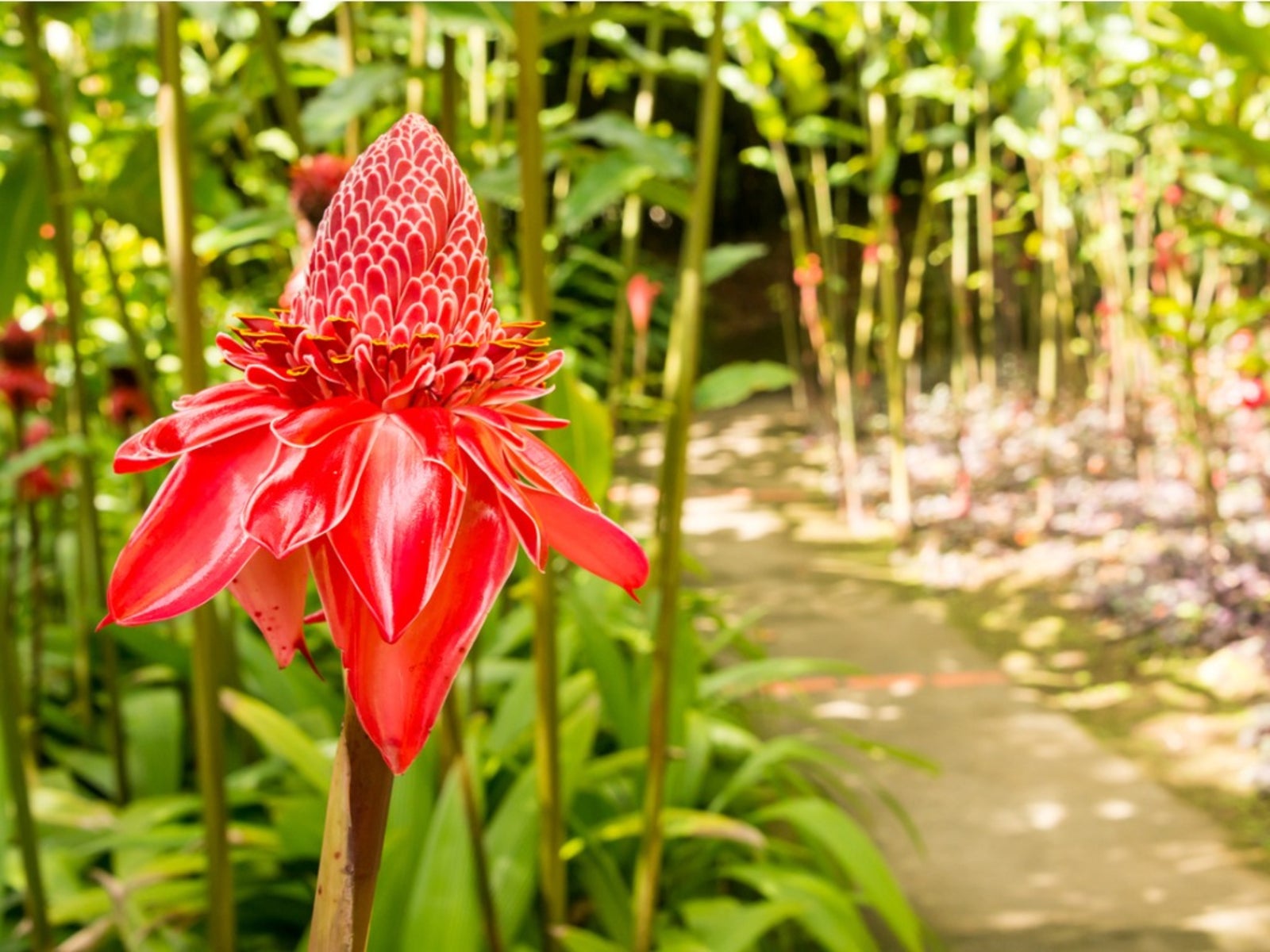The pink torch ginger plant, a captivating horticultural marvel, captivates with its vibrant blooms and unique botanical characteristics. Its morphological features, cultivation requirements, and diverse applications make it a subject of great interest in the realm of gardening and beyond.
With its striking stem, elongated leaves, and flamboyant flowers, the pink torch ginger plant stands out as a distinctive member of the ginger family. Its growth habit, size, and shape add to its aesthetic appeal, making it a sought-after choice for landscaping and ornamental purposes.
Botanical Description

Pink Torch Ginger (Etlingera elatior), also known as Red Ginger or Torch Lily, is a captivating ornamental plant belonging to the ginger family (Zingiberaceae). This tropical beauty originates from Southeast Asia, where it thrives in the warm, humid climate.
Pink Torch Ginger exhibits a distinctive growth habit, featuring erect, reed-like stems that can reach heights of up to 6-8 feet (1.8-2.4 meters). These stems are adorned with large, glossy leaves that are arranged in an alternate pattern. The leaves are typically lance-shaped, with smooth edges and a vibrant green color.
Flowers, Pink torch ginger plant
The most striking feature of Pink Torch Ginger is its magnificent inflorescence. The flower head emerges from the base of the plant and resembles a fiery torch, hence the common name. It consists of numerous bracts, which are modified leaves that form a protective layer around the actual flowers.
The bracts of Pink Torch Ginger are arranged in a spiral pattern and vary in color from shades of pink to red. They are adorned with intricate patterns and streaks, creating a mesmerizing display. The true flowers are small and inconspicuous, hidden within the bracts.
Uses and Applications: Pink Torch Ginger Plant

Pink Torch Ginger is a versatile plant with various uses and applications beyond its ornamental value.
In traditional medicine, Pink Torch Ginger has been employed for centuries in various cultures. Practitioners of traditional medicine have utilized the plant to treat a range of ailments, including digestive issues, respiratory problems, and skin conditions.
Ornamental Value
Pink Torch Ginger is a popular landscaping plant due to its striking appearance and low maintenance requirements. The plant’s vibrant pink flowers and lush foliage add a tropical touch to gardens and landscapes.
Traditional Medicine
Pink Torch Ginger possesses potential medicinal properties, although scientific research is still ongoing. Traditional healers have used the plant to alleviate digestive issues, such as indigestion and diarrhea, due to its anti-inflammatory and antimicrobial compounds.
Additionally, Pink Torch Ginger has been traditionally employed to treat respiratory ailments like coughs and asthma, owing to its expectorant and anti-inflammatory properties.
Furthermore, the plant’s anti-inflammatory and antibacterial properties have led to its use in treating skin conditions such as eczema and acne.
Other Applications
Pink Torch Ginger finds uses beyond landscaping and traditional medicine.
The plant’s edible flowers and rhizomes can be incorporated into culinary dishes, adding a unique flavor and vibrant color. The flowers can be used as a garnish or in salads, while the rhizomes can be cooked and consumed as a vegetable.
Pink Torch Ginger is also a source of essential oils. The essential oil extracted from the plant’s flowers and leaves is valued for its aromatic properties and potential therapeutic benefits in aromatherapy.


The pink torch ginger plant, known for its vibrant blooms and medicinal properties, has a long history of use in traditional medicine. Its anti-inflammatory and antimicrobial properties have been studied for their potential in treating various ailments, including plantar warts.
While there is limited scientific evidence to support the direct use of pink torch ginger plant for plantar warts, epsom salt plantar wart treatments have shown promising results in softening and exfoliating the skin, creating a more favorable environment for wart removal.
By incorporating the anti-inflammatory and antimicrobial properties of pink torch ginger plant into a comprehensive treatment plan, individuals may find relief from the discomfort and appearance of plantar warts.
The pink torch ginger plant (Etlingera elatior) is a tropical plant that is native to Southeast Asia. It is a member of the ginger family and is known for its large, showy flowers. The plant can grow up to 10 feet tall and has long, narrow leaves.
The flowers are typically pink or red and can be up to 6 inches long. The plant prefers to grow in moist, well-drained soil and full sun to partial shade. It is important to note that the plant can become invasive in some areas, so it is important to check with your local extension office before planting.
The pink torch ginger plant can be grown in an extra large planter box if you do not have enough space in your garden. The plant will still need to be watered and fertilized regularly, and it will need to be brought indoors during the winter months if you live in a cold climate.
The pink torch ginger plant, with its vibrant inflorescences, is a testament to the remarkable diversity of the plant kingdom. Its botanical significance extends beyond its aesthetic appeal, as it serves as a potent reminder of the profound connection between plants and human health.
As the plant-based athlete movement gains momentum, the pink torch ginger plant stands as a beacon of inspiration, showcasing the potential of plants to fuel human performance and vitality.